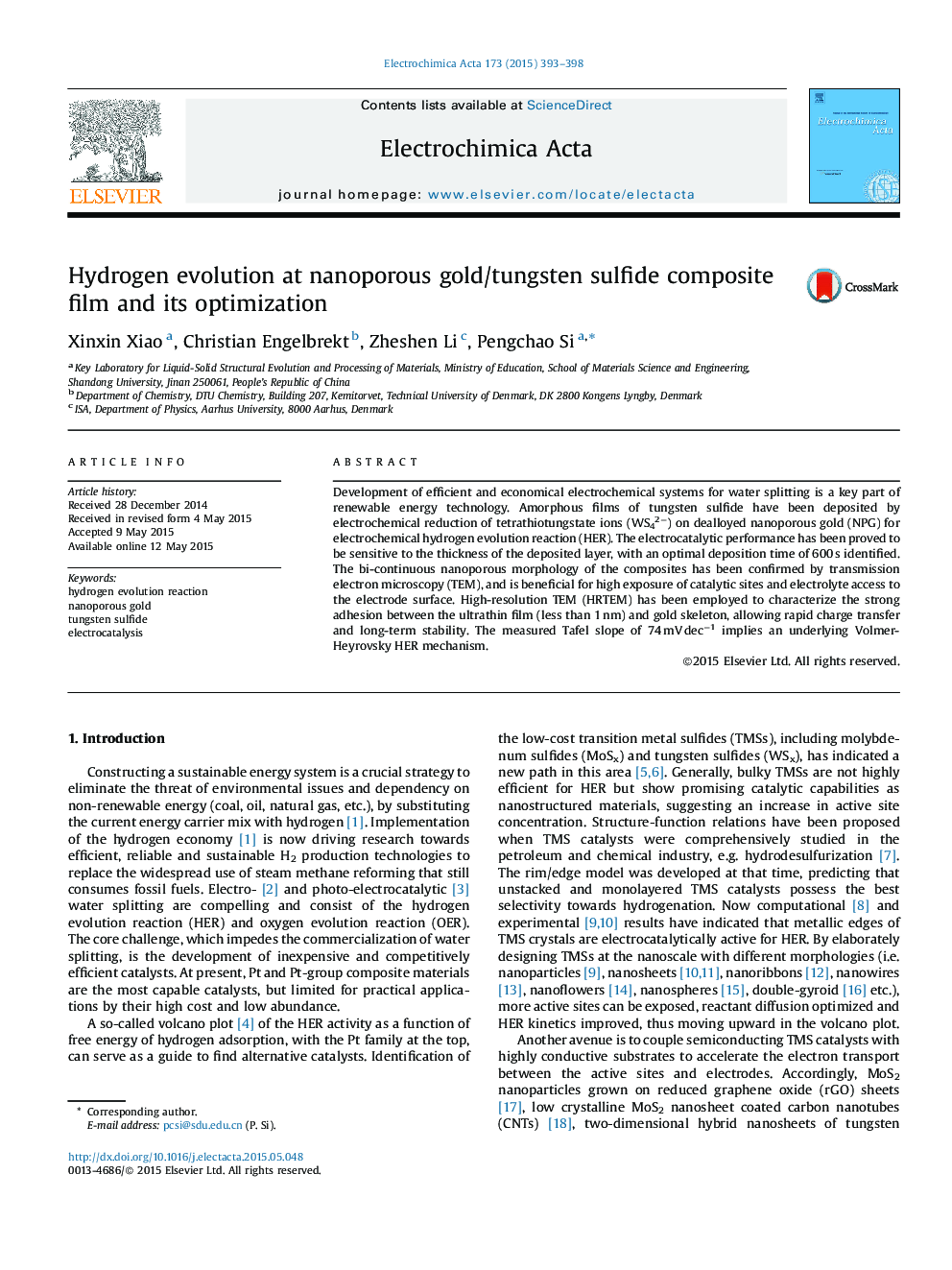| Article ID | Journal | Published Year | Pages | File Type |
|---|---|---|---|---|
| 183800 | Electrochimica Acta | 2015 | 6 Pages |
•Thin tungsten sulfide layers were electro-deposited onto nanoporous gold surfaces.•The resultant composites showed good activity for hydrogen evolution in acid.•The thickness of deposition layer can be tuned by controlling the deposition time.•The catalytic performance was sensitive to the thickness of deposition layer.
Development of efficient and economical electrochemical systems for water splitting is a key part of renewable energy technology. Amorphous films of tungsten sulfide have been deposited by electrochemical reduction of tetrathiotungstate ions (WS42−) on dealloyed nanoporous gold (NPG) for electrochemical hydrogen evolution reaction (HER). The electrocatalytic performance has been proved to be sensitive to the thickness of the deposited layer, with an optimal deposition time of 600 s identified. The bi-continuous nanoporous morphology of the composites has been confirmed by transmission electron microscopy (TEM), and is beneficial for high exposure of catalytic sites and electrolyte access to the electrode surface. High-resolution TEM (HRTEM) has been employed to characterize the strong adhesion between the ultrathin film (less than 1 nm) and gold skeleton, allowing rapid charge transfer and long-term stability. The measured Tafel slope of 74 mV dec−1 implies an underlying Volmer-Heyrovsky HER mechanism.
Graphical abstractFigure optionsDownload full-size imageDownload as PowerPoint slide
